Whether you’re drawn to the luxurious shine of foil, the deep impressions of letterpress, or the sleek simplicity of digital printing, each method offers something unique.
Your invitations set the tone for your wedding, and the printing process plays a big role in how they look and feel. In this guide, we’ll break down foil stamping, letterpress, and digital printing, helping you understand their processes, differences, costs, and what makes each one special. By the end, you’ll know exactly which printing style best fits your vision, budget, and wedding aesthetic!
Let’s dive in!
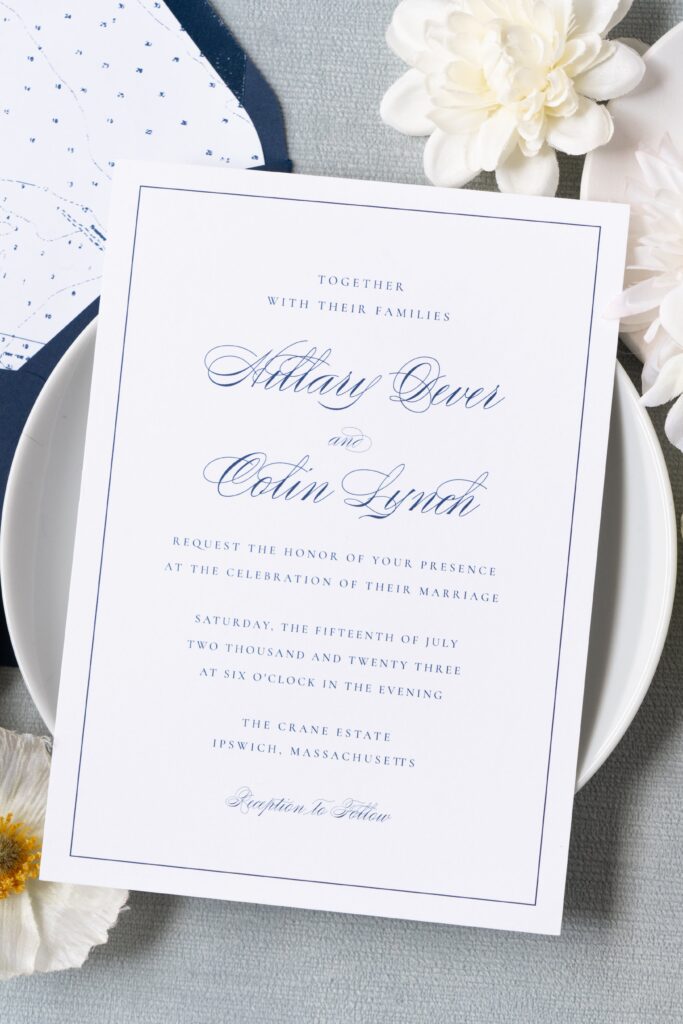
Digital Printing
Digital Printing (also known as flat printing) is a fast, efficient, and versatile method for wedding invitations, making it a popular choice for many couples. This high-resolution printing process uses CMYK (cyan, magenta, yellow, black) ink to print directly onto the paper, allowing for vibrant, full-color designs with incredible detail. Digital printing is particularly ideal for kaleidoscopic designs, gradients, and photography, offering a sleek and modern finish. It’s a great option for couples who want a colorful, personalized invitation suite without the higher costs or time commitment of other printing methods.
Pros: Affordable, fast turnaround time, works well with multi-colored designs.
Cons: No texture or raised effect, can appear dull on cotton paper.
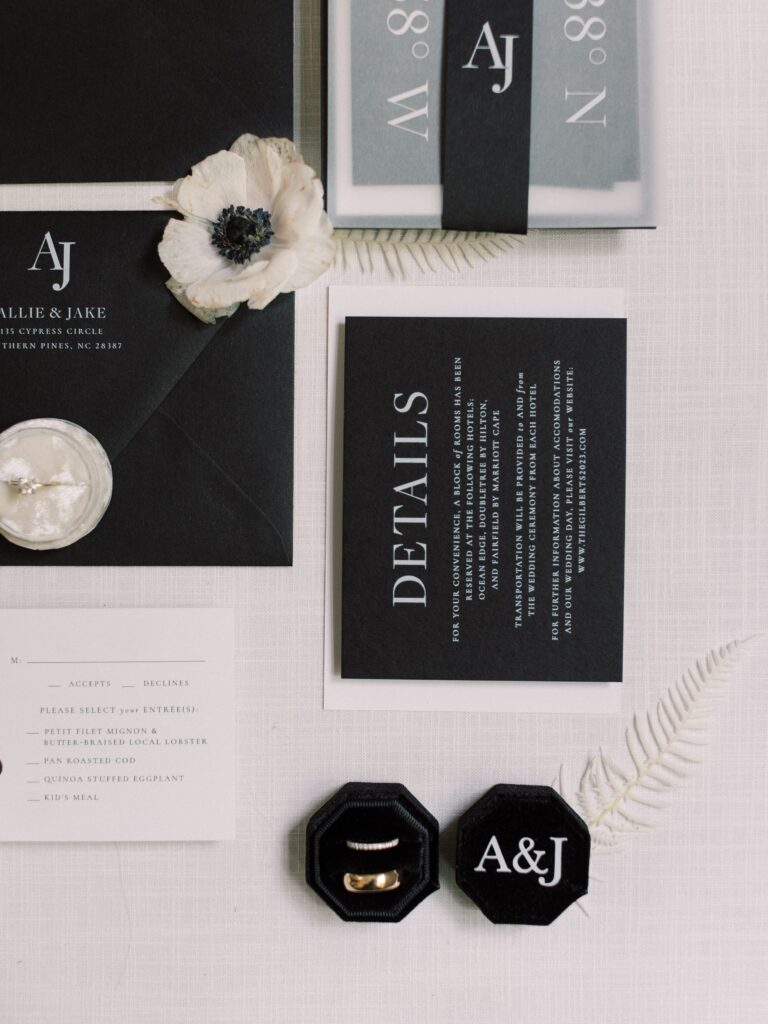
White Ink Printing : Digital Printing’s Cousin
An exciting variation of digital printing is white ink printing, which is ideal for printing white ink onto dark or colored paper or envelopes.
Digital printers typically use four-color cartridges (CMYK), which include cyan, magenta, yellow, and black ink to create vibrant and detailed prints. Since “white” is considered the absence of color in the CMYK model, it doesn’t show up when printed on white paper. However, with the development of white ink toner cartridges in the early 2000s, this limitation has been overcome. White ink printing has since gained popularity.
Pros: Can print on dark, colored, or transparent paper and still achieve crisp designs.
Cons: Specialty toner makes this slightly more expensive, poor contrast on mid-light colored paper
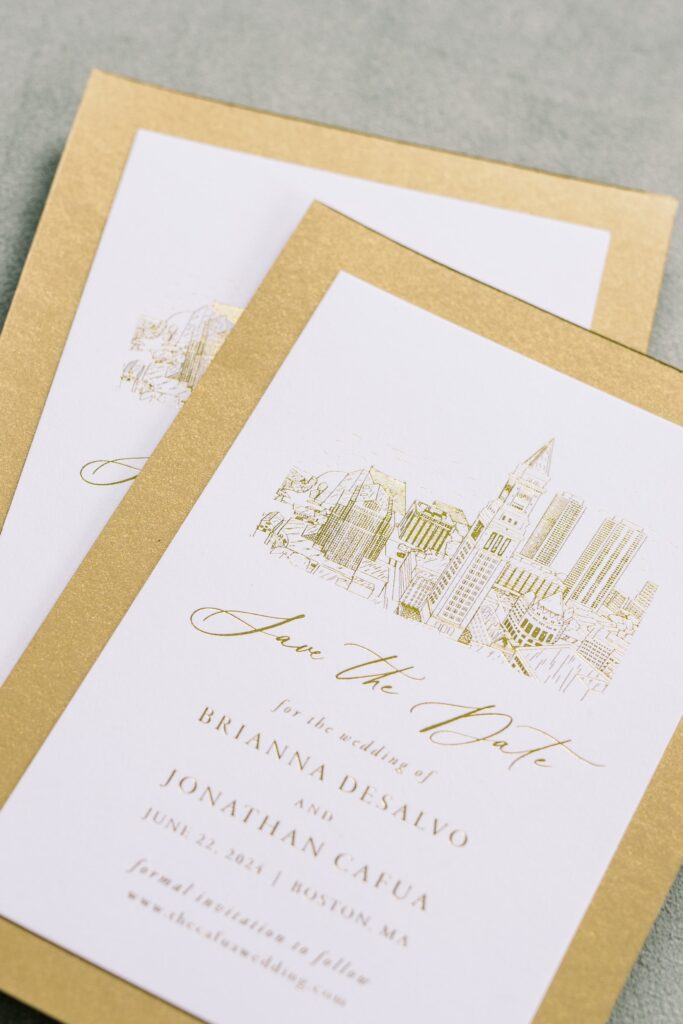
Foil Stamping
Foil stamping, also known as foil printing, is a stunning way to add a touch of metallic shimmer and elegance to your designs. Whether you’re looking to highlight certain elements or give your invitations a luxurious feel, foil stamping creates a beautiful, eye-catching effect that’s hard to miss.
The foil stamping process involves custom made metal dies (stamps) and heat to apply metallic foil onto a surface. A heated die presses the foil onto the paper with precise pressure, ensuring the foil adheres only to the desired areas. This creates a beautiful, shiny metallic finish, often accompanied by a slight embossed imprint, giving your design both texture and visual impact.
Pros: Can print on dark, colored, or transparent paper and still achieve crisp designs.
Cons: Higher cost, works best on smooth papers with minimal texture
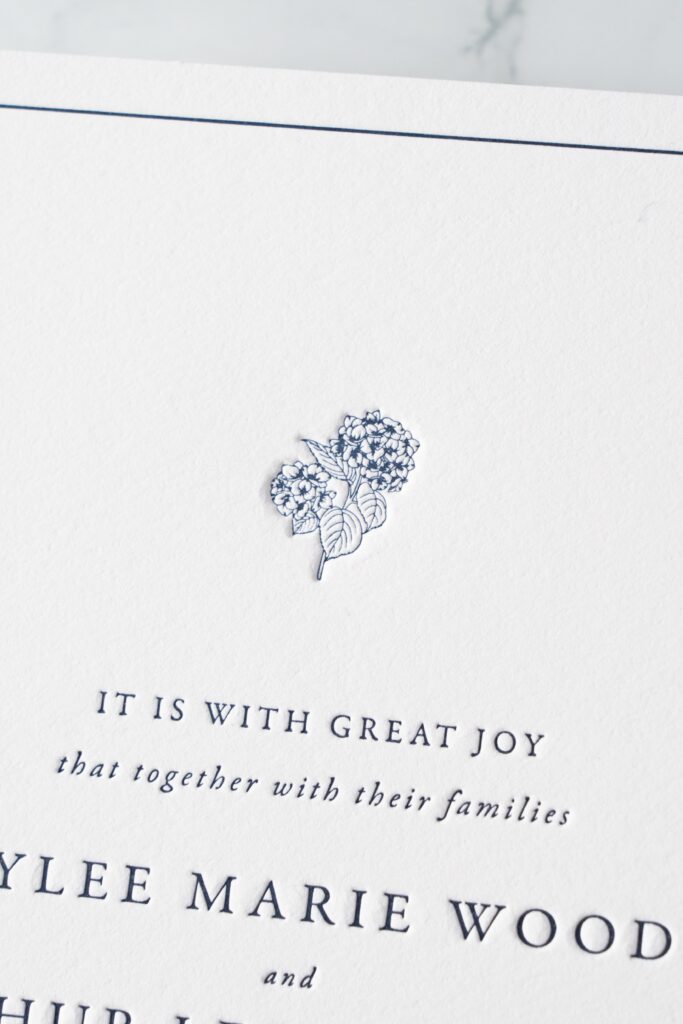
Letterpress Printing
Letterpress printing is a timeless technique that has been used for centuries to print texture-rich designs.
Your final design is first turned into a metal or polymer plate, which is secured onto a press. Hand mixed specialty ink is applied to the plate, which is then pressed into thick, cotton paper with great precision. Each sheet of paper is fed by hand one by one, which makes letterpress printing a more labor-intensive method that results in a beautifully crafted, tactile piece.
Pros: Super elegant and luxurious, full of texture
Cons: Higher cost, works best on simple designs and fewer colors
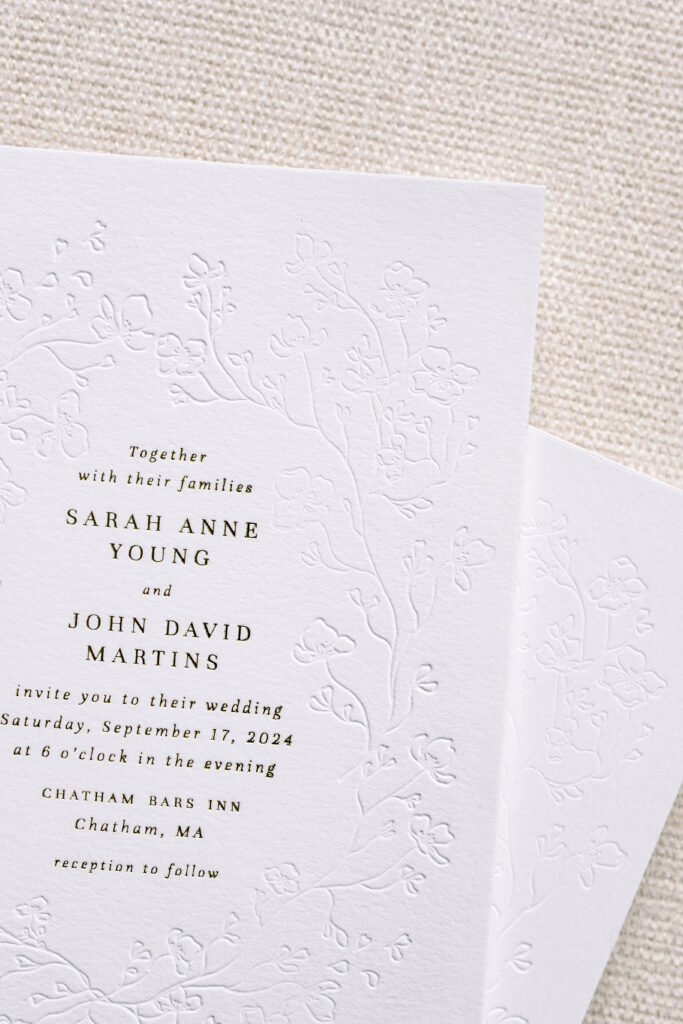
Embossing & Debossing: Letterpress Printing’s Cousin
If you’re looking to add some extra elegance and texture to your designs, embossing and debossing are excellent options! Both techniques create a beautiful, tactile experience that enhances your stationery.
Here’s the difference between the two:
Embossing: This method raises your text or design elements above the surface of the paper. A custom 2-part die presses the design, pushing the paper upwards and creating a stunning 3D effect that’s visually striking and feels amazing to the touch.
Debossing: In contrast, debossing presses your text or design elements into the paper, creating a subtle, elegant impression. It’s similar to letterpress printing but without ink, making it a more cost-effective option compared to embossing.
So…which print method is right for you?
There are a few important things to consider when selecting a printing method for your wedding invitations. Your budget plays a role, but so does the overall look and feel you want to achieve. Do you want something elegant and timeless, or bold and modern? Are you drawn to deep, textured impressions or metallic details? The type of paper you love and the complexity of your design can also influence which method will work best. And of course, if you’re on a tight timeline, some methods take longer than others.
If you’re unsure which print style is right for you, seeing and feeling the difference in person can be incredibly helpful! We offer sample packs so you can experience each method up close before making a decision. You can also reach out with any questions—we’re happy to help guide you toward the perfect option for your big day!